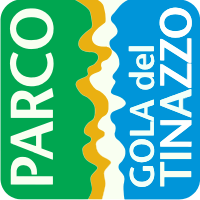PARK FAUNA
While not especially extensive over a large area, the park offers several different environments that represent many settlement opportunities for the fauna, which is very different. Here, one can find the typical inhabitants of the Pre-Alps such as the fox, the Beech Marten, the yew, the squirrel, the dormouse, the hare, the roe deer, the Eurasian jay, the pheasant and many passeriformes. The areas with its terraced lawns, many of which are used as olive groves with its favourable exposure to the south, have dry stone walls and overhanging cliffs that are home for several species of reptiles, birds and butterflies.
The ravine woods, which precede the fossil gorge of the Tinazzo, is a habitat that has a high humidity and a climate that in summer time is cooler than the surrounding area, while in winter is actually quite mild. There is a small stream here that comes from several sources. In this stream one can find the cray fish, a freshwater crustacean which has more or less disappeared from most of the European streams, threatened with extinction due to the environmental and water pollution, diseases and the competition of exotic species introduced by man. Streams, small brooks and ponds are also the ideal habitat for the fire salamander, which needs them for the development of their larvae. After metamorphosis and the developing of the yellow and black pattern they will abandon them and go back to living in the thick of the woods.
PARK VEGETATION
While dominated by the amazing geomorphological landscape of the gorge, the small territory of the park, because of its complex morphology, the local climate, and the nature of its rock presents a stunning display of floral and vegetation interest.
The woods, in its complex composition of tree species (in which the Hop Hornbeam, Ostrya carpinifolia, is predominant) and shrubby and herbaceous species, show some of the typical aspects of the ravine woods near the gorge where its darkness, the coolness, and humidity of the environment has favored a spontaneous settlement of yew (taxus baccata). Spectacular is the development of the Eurasian fern (Phyllitis scolopendrium), which covers the slopes of the woods. On the limestone cliff the sky blue bellflower (campanula elatinoides) stands out, rare and precious in this hidden place, with its beautiful heart-shaped and velvety leaves. On the margins of a perennial stream the horsetail states its unmistakable presence with two species: the field horsetail (equisetum avense) and the rough horsetail (equisetum hyemale). It isn't strange to have such biodiversity of plants with botanic entities such as the black locusts, Ailanthus, privets and even some palms of the Trachycarpus family, that are linked to a more or less anthropization which differs according to the park surface. Near the gorge, terraced shelves host old hay meadows, which in the past showed more multicolored blossoms. Even the bare rock walls are colonized by vegetation such as the light blue bell flower (campanula carnica), the queen grass (telechia speciosissima) similar to a huge yellow daisy, and the Horned Rampion (Phyteuma scheuchzert). The other parts of the park, exposed to the sun, host a sparse and low scrub dominated by the hop hornbeam, ashes (Fraxinus ornus ) and some English oaks (Quercus pubescens). The doors left by the coverage of the woods have been colonized by the flora of dry grasslands where the sesleria, the most common graminaceous, is accompanied by several Mediterranean and steppe range species.
